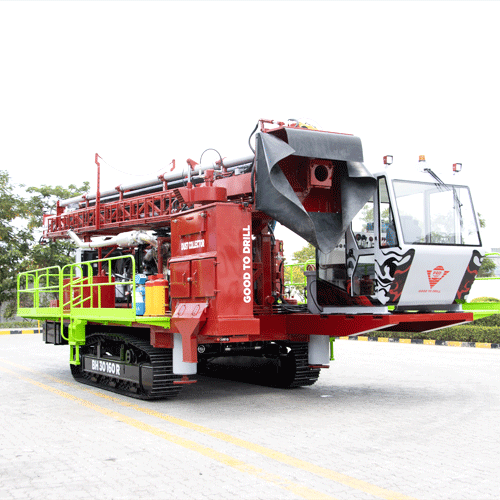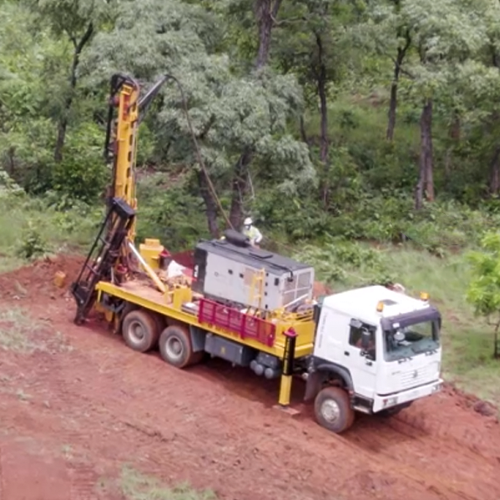CONSTRUCTION DRILLING ALL YOU NEED TO KNOW
Drilling is adopted world-wide for a variety of such activities as searching for economically exploitable salt & mineral deposits, exploring petroleum reserves underground, sinking water wells and for general or specific, scientific and research purposes. Drilling holes in rock to receive blasting charges is an operation in tunnelling, mining, and other excavations. A variety of Drilling equipment and methods are used by the construction and mining industries, which are developed and classified according to their order of present day and applicability. The methods adopted include Mechanical, Thermal, Hydraulic, Sonic, Chemical, Electrical, Seismic and Nuclear options. Drilling engineering is one of the most important links in the construction field, being, after all, the science of providing a sound foundation to all structures. Without drilling engineering, there would be no high rise structures of modern age that require deep foundations.
Early Methods
The first patented rock drill was invented in 1849 by J.J. Couch of Philadelphia. Its drill rod passed through a hollow piston and was thrown like a lance against the rock; caught on the rebound by a gripper, it was again hurled forward by the stroke of the piston.
A notable development was a hammering-type rock drill for overhead drilling devised by C.H. Shaw, a Denver machinist, before 1890. Cuttings dropped out by gravity. This machine was called a stoper when it was used in Colorado and California mines. A pneumatic feed held the machine in place and fed the steel into the rock. These two developments, hammering action and air-leg feed, became important in modern machines. The problem of removing the cuttings from horizontal drill holes was eventually solved by the invention of the hollow drill with an air channel for blowing compressed air into the bottom of the hole.
Later Developments
Most modern drilling machines are either rotary (involving a cutting or grinding action) or percussive (chipping rock or ground intermittently by impact). A combined rotary-percussive drill uses both types of action when the hardness of the stratum warrants it.
Rotary Drilling
The simplest rotary drill is the earth auger, which is hand-operated and is used principally for drilling holes in relatively soft earth. Rotary drilling may be adapted for use at any angle and is suitable for underground mining. In most rotary drilling, hollow rods of steel provide circulation of cooling water or other coolants. Drill bits used depends on the hardness of the surface and include drag bits of tungsten carbide tips for cutting, roller bits with wedge-shaped teeth for crushing hard rocks and diamond bits for grinding away the rocks. Rotary drilling is limited to rock with low tensile strength such as salt, silt and soft limestone not containing abrasive quartz minerals.
Percussive drilling
This method is slower than rotary drilling but has a number of special applications, such as for shallow holes. In percussive drilling, hammering blows are applied successively to a tool attached to rods or a cable, and the tool is rotated so that a new portion of the face is attacked at each blow. Sometimes, a second cylinder is sunk inside the first, and water is pumped down the inner pipe to loosen soil and raise debris. For deep boring, rotary drilling has replaced these methods. Unlike any other drilling method, percussion can remove boulders and break harder formations, effectively and quickly through most types of earth. Rock breakage by percussive drilling can be divided into four phases: Crushed zone, Crack formation, Crack propagation and Chipping. However, the equipment is quite heavy, and the cost is higher, but the performance is slower than other methods. Percussion drilling is suitable for unconsolidated and consolidated formations: Sand, silt, stiff clays, sandstone, laterite and gravel layers.
Rock Drilling Applications
Rock drillings needs a special mention as it evolved from simple hammering on hand-held drilling tool to piston type drilling using steam, hydraulic or pneumatic force; then further developed to rotary jet piercing drills. Modern rock drills are commonly mounted on large rigs to bore many holes at one time. Today experiments are under way for utilizing ultrasonic waves, high frequency electricity or thermal/nuclear energy for breaking rock in situ.
Concrete Drilling
Concrete core drilling involves drilling perfectly rounded holes in concrete walls, floors, ceiling, and other structures. This fine-tunes the concrete structure to accommodate conveniences like phone lines, plumbing, HVAC ducting, sprinkler systems and others. Diamond concrete-core drills are the most commonly used tools for this process. A solid cylindrical concrete core or “slug” is removed from the hole once the drilling is complete.
Deep Foundations
The most common drilling methods in deep foundation are Kelly drilling, continuous flight auger drilling, full displacement drilling, double rotary drilling, drilling with hammer grab, reverse circulation air injection drilling and down-the-hole drilling. In the drilled cavity, a multitude of products can be created, e.g. by filling with fresh concrete a so-called cast-in-place pile is produced. Precast concrete and steel elements serving as load-bearing or lining elements can also be inserted.
Oil & Gas Well Construction
Wells are created by drilling down into an oil or gas reserve that is then mounted with an extraction device such as a pumpjack which allows extraction from the reserve. Creating the wells can be an expensive process, especially when creating offshore oil platforms. The process of modern drilling for oil wells first started in the 19th century, but was made more efficient with advances to oil drilling rigs during the 20th century.
The well is created by drilling a hole 12 cm to 1 meter (5 in to 40 in) in diameter into the earth with a drilling rig that rotates a drill string with a bit attached. After the hole is drilled, sections of steel pipe (casing), slightly smaller in diameter than the borehole, are placed in the hole. Cement may be placed between the outside of the casing and the borehole known as the annulus. The casing provides structural integrity to the newly drilled wellbore, in addition to isolating potentially dangerous high pressure zones from each other and from the surface.
With these zones safely isolated and the formation protected by the casing, the well can be drilled deeper (into potentially more-unstable and violent formations) with a smaller bit, and also cased with a smaller size casing. Modern wells often have two to five sets of subsequently smaller hole sizes drilled inside one another, each cemented with casing.
Concrete Road Construction
Highway construction projects are multifaceted challenges. For large road construction projects, where long stretches of concrete need to be drilled, multi-gang, on-slab, dowel pin drills are useful. Self-propelled wireless units that maximize drilling efficiency, accuracy and safety also come in handy. Power crab steering can further boost efficiency by letting operators drive down the slab without continually raising and lowering the drill bed. A money-saving alternative may be a dual pneumatic push unit with steering capabilities.
For full-depth repair or patch-work jobs in which sections of concrete need to be removed and replaced, use of drills that can be mounted to an excavator can be used. Available in both hydraulic and pneumatic options, these drills offer superior portability and eliminate operator fatigue by utilizing the carrier to transport the drill.
Constraints in Drilling Process
Whatever drilling method is used, there are several considerations which must be taken into account:
- The amount of energy required to drill is governed by the rock type. Unconsolidated formations such as sand, silt or clay are weak and much easier to drill than consolidated rocks such as granite, basalt or slate which are hard, strong and dense.
- For hard rocks, cutting tools will need cooling and lubrication.
- Rock cuttings and debris must be removed.
- Unconsolidated formations will require support to prevent the hole from collapse.
- A number of discontinuities in the drilling process can result from tool-bit wear, degradation of drilling fluids, damages to the wellbore, problems in testing etc.
Discontinuities are costly and time consuming and adherence to a systems approach in all instances should reduce costly discontinuities to acceptable levels.
Typical Drilling Process
Key processes of the typical drilling system includes processes such as rock breakage, debris removal, and maintenance of borehole stability. These are the rate-controlling processes or system bottlenecks, and they limit the rates at which the other processes can operate. Other processes include drill bit sensing (e.g., monitoring bit wear), rock properties sensing and evaluation, drill bit or drill string steering, and wellbore damage sensing. important recent advances in sensing while drilling and directional drilling show that rapid and striking advances are already under way.
Conclusion
Advances in drilling systems are ever evolving. A smart drilling system is the one, which is capable of sensing and adapting to conditions around and ahead of the drill bit to reach desired targets. This system may be guided from the surface, or it may be self-guided, utilizing a remote guidance system that modifies the trajectory of the drill when the parameters measured by the sensing system deviate from expectations. Rapid innovation in microelectronics and other fields of computer science and miniaturization technology holds the prospect for greater improvements—even revolutionary breakthroughs—in these systems. Adopting an integrated systems approach ensures that all components and processes are made to function in unison at optimum level of performance, without redundancies and over loading.



